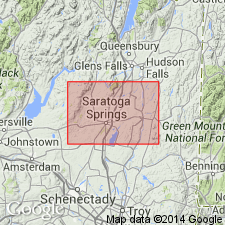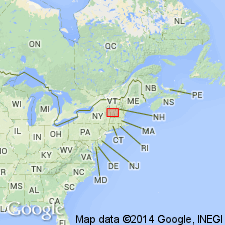
- Usage in publication:
-
- Zion Hill quartzite
- Modifications:
-
- Original reference
- Dominant lithology:
-
- Quartzite
- AAPG geologic province:
-
- New England province
Summary:
Pg. 69-70. Zion Hill quartzite. [Is] Ferruginous quartzite of [T.N.] Dale [1904?]. Named from Zion Hill, Hubbardtown, VT [in Castleton quadrangle], where, according to Dale, it is exposed to thickness of 70 feet. Overlies Schodack shales and limestones. Is top formation of Lower Cambrian.
Recognized in Rensselaer Co., eastern NY, and Rutland Co., southwestern VT.
Source: US geologic names lexicon (USGS Bull. 896, p. 2395).

- Usage in publication:
-
- Zion Hill Quartzite Member*
- Modifications:
-
- Areal extent
- AAPG geologic province:
-
- New England province
Summary:
Late Proterozoic Nassau Formation is basal part of Taconic allochthon sequence in Glens Falls quadrangle. Includes Bomoseen Graywacke Member and Zion Hill Quartzite Member (exposed on Bird Mountain, Vermont), and Rensselaer Graywacke Member (exposed just south of quadrangle boundary). Overlain by Cambrian Browns Pond Formation.
Source: GNU records (USGS DDS-6; Reston GNULEX).
For more information, please contact Nancy Stamm, Geologic Names Committee Secretary.
Asterisk (*) indicates published by U.S. Geological Survey authors.
"No current usage" (†) implies that a name has been abandoned or has fallen into disuse. Former usage and, if known, replacement name given in parentheses ( ).
Slash (/) indicates name conflicts with nomenclatural guidelines (CSN, 1933; ACSN, 1961, 1970; NACSN, 1983, 2005, 2021). May be explained within brackets ([ ]).

